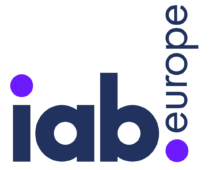Brand Safety on YouTube: Q&A with Channel Factory
by Mathew Broughton on 23rd May 2019 in News

YouTube is realigning itself to be a more appealing prospect for advertisers, with recent initiatives such as moving their Original series from behind the paywall to an ad-funded model and establishing a 'DTC Council'. However the video-sharing platform has long faced a battle with brand safety, with advertisers pulling their ads due to various issues such as commercialising terrorist propaganda and inappropriate comments on supposedly child-friendly content.
To determine whether YouTube can truly be a brand safe platform, and what can content producers do to mitigate any risks, ExchangeWire speaks to Mattias Spetz (pictured below), Co-Founder and Managing Director at Channel Factory, EU.
ExchangeWire: What are the most important implications of YouTube moving their Original series and other premium content away from the paywall model back to an ad-funded approach?
Mattias Spetz: YouTube is offering something that Netflix isn’t and there is a huge appeal in luring paying customers toward free, ad-supported celebrity content; as well as homegrown YouTube star-driven content, into which they’re pumping millions of development dollars.
The move creates exciting opportunities for advertisers but it will have significant implications on brand safety, as well as funnel and performance issues.
The first issue will be on brand safety. Advertisers will need to pay greater attention to the content, as well as the audience that they are buying; in order to achieve brand safety and suitability objectives. Viewers will be tuning in 'by appointment', and therefore will be paying closer attention to the messages that they receive. It will be crucial to be more tactical in deciding what sort of ads (both in formatting and goals) are shown, in order to match with the style and tone of the content.

Mattias Spetz, Co-Founder and Managing Director, Channel Factory, EU
The second area of impact will be on performance. Early-adopting advertisers will have the chance to actively shape the offering which opens up a lot of new possibilities in multi-channel advertising, as well as incremental reach opportunities against audiences; whether via retargeting or by addressing those viewers via user-generated show-related content across a complement of devices. Brands will need to pay greater attention to which devices are used to watch premium big-screen programming and adjust their media planning accordingly
Finally, there will be implications on where it figures in the consumer funnel. Premium programming will be longer in duration, appointment-based, and largely consumed on the big screen; which isn’t a great match for the thousands of brands that rely on YouTube for direct response campaigns.
The term ‘brand safety’ can often be poorly defined when it comes to platforms such as YouTube, for instance profanity may not be as pertinent an issue for an urban clothing range compared to children’s toys. How can brands work together with YouTube and third-parties to ensure brand safety is correctly defined in the context of their product/service?
The key here is thinking in terms of brand suitability, not brand safety. Brand safety is a catch-all term which overlooks the spectrum of nuance and customisation necessary to bring brand strategy and values, not just advertising, to YouTube.
Brand suitability is subjective and brands have varying tolerance levels. Not only is every brand different, but every channel and video are different in terms of what safety and suitability issues they implicate. Advertisers need to think about what topics are completely off-limits from a safety perspective, and then dig deeper into what is acceptable, or actually even necessary, from a suitability and relevance perspective. Practically speaking, this is an area where third-parties have a unique opportunity to help both brands and YouTube succeed by creating more customised blacklists and whitelists to define the contexts in which ads run. Ultimately, it is all about dialling up brand suitability to a level that is right for you.
Categories such as profanity, sexual content and nudity, violence, and injury help define a baseline. However, it’s important to consider a variety of other topics when formulating blacklisting and whitelisting strategies, such as news, politics, health, religion, and more. Brand safety and suitability cross commercial and cultural lines that, beyond a point, it’s simply not Google’s job to anticipate, which is why Google’s inventory brackets on occasion fail to filter unsafe content.
Most important are the YouTube channels themselves. They offer a data layer that can be harnessed to tailor brand safety approaches. One-to-one relationships with creators gives advertisers access to more video and audience data, including comments, video transcripts, audience sentiment, and virality. This helps brands build media plans that account for both relevance and risk.
When advertisers ‘flip-flop’ between allowing their ads to be placed on YouTube, and removing them, do you see this as merely a PR exercise on their part, or does this reflect genuine concerns about advertising on the platform?
In most or all cases, it is genuine concern about the platform. Brand/content misalignment poses very real reputational risks for brands. Repeated pulling of ad spend reflects a desire to balance advertisers’ need for a channel whose marketing vitality is undeniable and the need for their voices to be heard on the matter.
One of the other reasons we might see flip-flopping is because many advertisers still perceive brand safety and performance as an 'either/or' scenario. That simply shouldn’t be the case. While certain brand safety tactics absolutely limit scale, brand safety is a data-layering process, not a one-off phenomenon that can be harnessed to drive performance.
Scalable brand safety can be achieved by a combination of AI/machine learning, deeper contextual targeting, carefully curated dynamic whitelists, tailored blacklisting, and human intelligence desks sensitive to cultural nuance. When blacklists and whitelists are dynamically optimised and their implementation automated, it’s possible to capture the short-tail engagement that reflects the powerful reach and engagement YouTube offers, without sacrificing safety.
YouTube click growth rate declined in Q1 2019, which according to Google CFO Ruth Porat is “reflecting changes that we made in early 2018, which we believe are overall additive to the user and advertiser experience”, namely to improve brand safety. Does brand safety therefore fundamentally clash with ad revenues on YouTube, or can an appropriate balance be struck?
Yes, a balance can be struck. While some take the view that brand safety is an inhibiting factor, at Channel Factory we’ve always seen it as creating opportunities for more targeted strategies, whether for advertisers, or for YouTube itself. Once you evolve one-size-fits-all definitions of brand safety into more sophisticated brand suitability playbooks, brands will see scale and embrace the platform.
Of course, for YouTube, any attempt to offer personalised, curated experiences on an open video platform will affect the bottom-line. The changes, including tweaks to the recommendation algorithms, mass removals of unsavoury content, channel demonetisation, and human moderator hiring overheads were key not only to safeguarding brand safety, but also to improving performance and contextual relevance for users and advertisers alike. This will only serve to win over and benefit platform stakeholders in the long run. It’s a typical one-step back two-step forward scenario from a profitability perspective, and revenues will self-correct once advertisers see the value added by the changes.
Given that it may be impossible to make YouTube a 100% safe platform for brands due to the vast amount of user-submitted content, what steps can advertisers take to mitigate their risks?
The simple answer is: by using dynamic blacklists and whitelists. However, the devil’s in the details. Some advertisers filter YouTube’s own general brand safety inventory brackets through static, uncustomised blacklists or build whitelists which, while safer, struggle to scale and cost more.
We recommend cycling blacklists through YouTube 24/7. They should be hand-curated, updated at least daily and cover as many languages of the markets which your brand operates in. We’ve developed a dedicated brand safety intelligence platform to do just this.
It’s better to add layers to your blacklists and whitelists; for example by harnessing data shared by YouTube creators about their content and audiences through one-on-one integrations. You’ll want to use technology to analyse blacklisted keywords against video audio and comments, video sentiment and virality, and in so doing build a comprehensive channel, video and keyword blacklist that can be customised according to brand needs. These blacklists should be used both on the front-end to delimit the inventory you pick from, and also run alongside campaigns in real-time for maximum safety.
For maximum safety, these systems can be used alongside proprietary recommendation algorithms which curate scalable whitelists. Those whitelists should be updated and optimised several times per campaign, and can be customised to very specific brand needs, all the way down from industry sector audiences, through more niche audiences such as OTT-platform or network TV audiences. As a final measure, everything should be performance optimised against historical campaign analytics and machine-learning, to ensure your system throws the entire weight of prior experience behind each new campaign. Channel Factory has 5+ years and we are more than 10bn views strong and this accumulated data has been key to our success in building brand safe, suitable and performance-maximised campaigns.
What technology solutions should be employed to promote brand safety on YouTube, and within other video platforms, going forward? How difficult would it be to implement such technologies in the near future?
It’s a combination of technology, properly defining suitability and human review.
There’s a strong industry trend toward better implementation of AI and machine learning technologies, as well as better methods of analysing video-level data such as audio-visual elements and comments. However, while technology is key to filtration, and AI can minimise workload, there is still a requirement for human review guided by an open conversation about brand suitability as contained in a brand’s vision and values.








Follow ExchangeWire